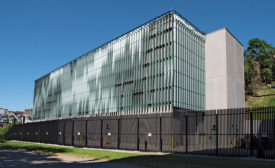Home » Energy/Industrial
Articles Tagged with ''Energy/Industrial''
ENR Southeast 2023 Best Projects
2023 Southwest Best Projects
Best Energy/Industrial: Arrow Canyon Solar and Battery Energy Storage System
October 30, 2023
2023 MidAtlantic Best Projects
Award of Merit Energy/Industrial: Service Center Metals
October 16, 2023
2023 MidAtlantic Best Projects
Best Project Energy/Industrial: Key Crossing Reliability Initiative
October 16, 2023
2023 Southern California Best Projects
Award of Merit - Energy/Industrial: [H2] Innovation Experience
October 16, 2023
ENR Northwest Best Projects
Best Energy/Industrial Project: The Juno Project
December 12, 2022
2022 ENR Mountain States Best Projects
Award of Merit Energy/Industrial: Clover Creek Solar Field
Read More2022 ENR Mountain States Best Projects
Best Project Energy/Industrial: Clover Creek Substation
Read More2022 ENR Mountain States Best Projects
Best Project, Energy/Industrial National Western Center
Read MoreThe latest news and information
#1 Source for Construction News, Data, Rankings, Analysis, and Commentary
JOIN ENR UNLIMITEDCopyright ©2025. All Rights Reserved BNP Media.
Design, CMS, Hosting & Web Development :: ePublishing




![[H2] Innovation Experience [H2] Innovation Experience](https://www.enr.com/ext/resources/2023/10/09/01_H2--Innovation-Experience.jpg?height=168&t=1696880427&width=275)





